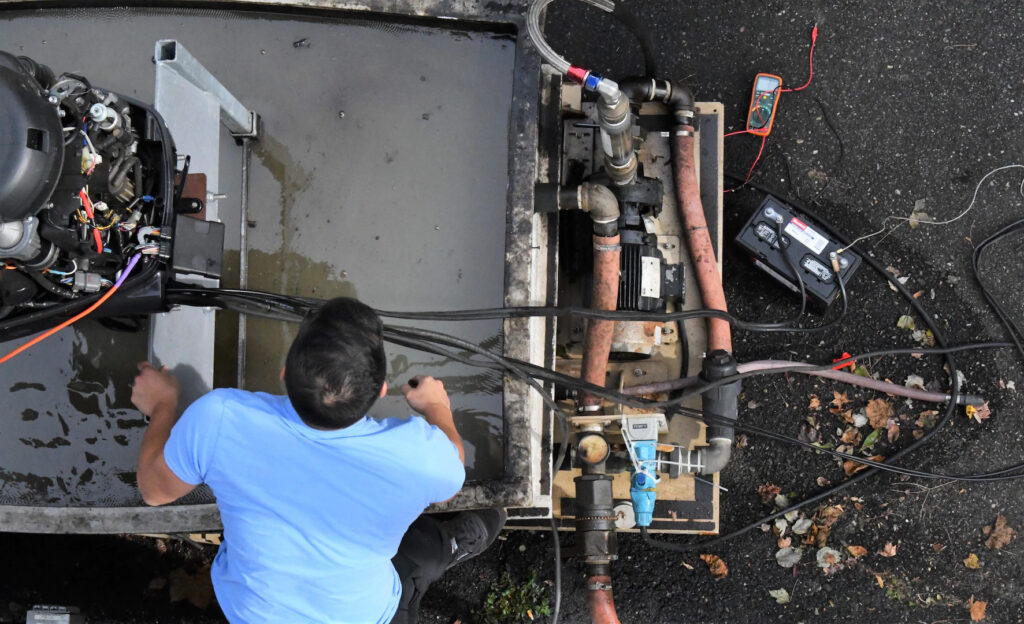
DAHLGREN, Va. — Under the directed energy umbrella, there are two significant areas of interest: high-energy laser and high-power microwave weapon systems, or HPM. At Naval Surface Warfare Center Dahlgren Division, the growing demand from the operational community for novel directed energy weapon systems resulted in a corresponding growth in NSWCDD’s technical capability in this area, the center said Jan. 5.
During a recent reorganization of the Integrated Engagement Systems Department, leadership looked at the two directed energy areas historically maintained in a single division and made the strategic decision to split them into respective divisions, recognizing the need for continued growth and development in both areas that have similar technical roots.
“HPM and lasers work in parallel in a lot of areas,” said NSWCDD HPM Weapon Systems Division Head Kevin Cogley, who spent several years working with high energy lasers before making the move to lead the new division.
“One thing that is unique in the HPM arena is that we can have graduated effects. In HPM, we can have a range of effects on target — from basically jamming a device to physically destroying electrical systems,” he explained. “HPM is very different than many other weapon systems because in many cases you may not see any outward physical effects during an engagement but will see nearly-instant results on the target’s operational performance. Using HPM, we can give our Sailors a capability that could be a desirable alternative to firing a kinetic weapon.”
Both high energy lasers and HPM projects require significant development costs, but “the cost per shot is pennies” instead of million-dollar weapons, according to Cogley. “When you look at a historically kinetic weapon system, DE brings a wealth of benefits in terms of magazine depth. We can keep shooting as long as there is power.”
The added “magazine depth” that directed energy can provide creates a strong argument for its use, compared to kinetic technologies.
“The Navy has strategic objectives to provide effective and affordable ship defense solutions that address growing threats to our ability to project power and protect freedom of the seas,” explained Navy Senior Technologist for DE Dr. Frank Peterkin. “The Dahlgren mission to deliver warfare systems to the fleet includes bringing forward new technical solutions like DE in general and HPM specifically, offering great promise to meet these goals.”
Over the last five or six years, DE has been a high-level thrust for the Office of the Secretary of Defense, with funding approximately doubling for research and development efforts.
The technical split of directed energy within the department, separating high-energy laser systems and HPMs, sets NSWCDD ahead of the curve for HPM testing. According to NSWCDD Deputy Director of the Research Institute for DE Matt McQuage, Dahlgren is one of two places in the country with a specific HPM division, acting alongside the Air Force Research Lab in New Mexico.
The two centers collaborate on the largest HPM projects in the country, offense applications, counter unmanned aerial systems and integrated air defense topics. The talents and expertise of the members of the Dahlgren HPM Weapon Systems Division results in the development of game-changing weapon system technologies that provides the warfighter with a unique capability to execute their mission.
- CNO Franchetti: Navy Has a Lot to Offer Young People - April 24, 2024
- NOAA to Break Ground for New facility at Naval Station Newport - April 24, 2024
- US Coast Guard Cutter Dauntless returns home after 61-day Operation Vigilant Sentry patrol - April 24, 2024






